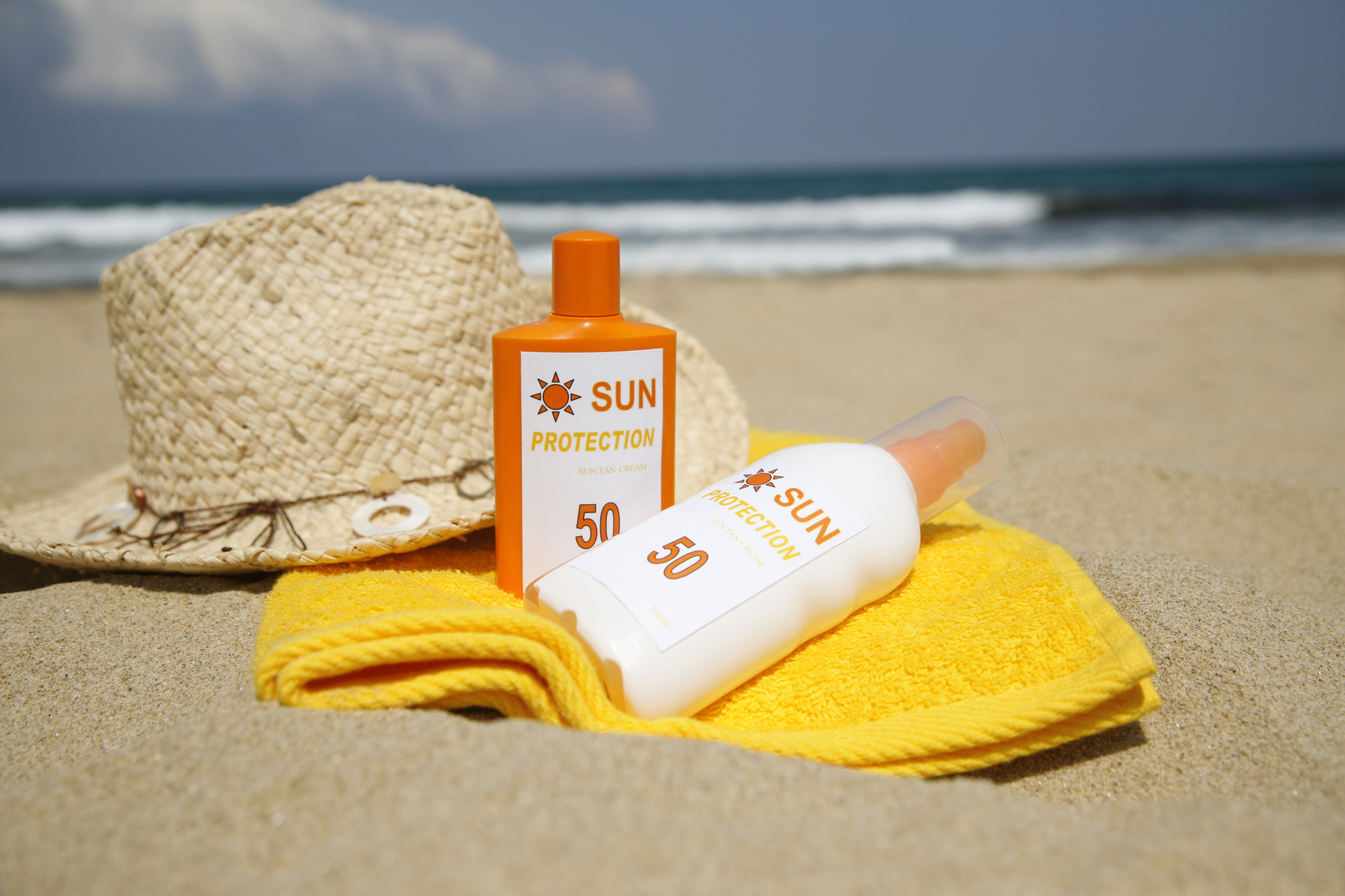Summer Sun Protection Tips
It’s summertime and the livin’ is easy…but the summer sun can be hard on the skin. Even seemingly minimal sun damage now can have serious long-term effects. There are plenty of reasons why overexposure to the sun’s harmful ultraviolet rays is dangerous, ranging from the cosmetic (premature wrinkles) to the possibly life-threatening (skin cancer). To practice good sun safety while still enjoying summer’s fresh air and warm weather, keep in mind these sun protection tips:
Apply sunscreen properly – Sure, everyone knows they should be wearing sunscreen, but many people do not use it in the most effective way. Here are some basic guidelines:
- Whether you spend your day in an office or at the beach, sunscreen should be applied to your skin every day, 15 minutes before leaving your home. Rainy days and sunny days. Summer and winter.
- Apply sunscreen to all areas of exposed skin including the tops of your feet, neck, ears, back, behind your knees, and any bald spots on the scalp.
- Reapply after swimming or sweating, or every two hours.
- Apply generously—you should be using approximately one ounce of sunscreen (about the size of a shot glass) each time.
See this infographic for more information about what you need to know about sunscreen.
Use the right kind of sunscreen – The American Academy of Dermatology recommends using a water-resistant sunscreen that has a sun protection factor (SPF) of at least 30. An SPF of 30 means you can stay in the sun 30 times longer without getting burned. Make sure the sunscreen provides broad spectrum coverage so that it will protect you from both UVA and UVB rays. This infographic talks about the importance of sun protection and the types of ingredients you should look for in a sunscreen.
Time it right – Obviously the best way to avoid sun exposure is to stay indoors. The sun’s rays are strongest between the hours of 10 a.m. and 4 p.m. If possible, limit your time outdoors during this time.
Take cover – Cover your head with a wide brim hat to shield your neck, nose, ears, forehead, and scalp from the sun. Protect your eyes with sunglasses that provide UVA and UVB protection. And wear loose fitting, dark colored, tight-woven clothing that covers your arms and legs. But remember–clothes are not a substitute for sunscreen. You still need to use sunscreen since most clothes do not offer a high enough SPF.
Go for the artificial glow – No tan is a healthy tan. Having a tan means that your skin has already been damaged by the sun’s UV radiation. If you want a darker look, try a spray tan or use a bronzer.
Get sunburn relief – If you do get a sunburn, there are several things you can do to get some relief:
- Take an anti-inflammatory painkiller such as ibuprofen.
- Place cool compresses on your skin but do not put ice directly on the sunburn.
- Moisturize your skin when it is damp with a hydrating lotion.
- Stay hydrated. Very bad sunburns can cause you to become dehydrated. Replenish fluids and electrolytes by drinking water or sports drinks.
- Use aloe vera to soothe the burn and promote healing.
- Try a DIY sunburn relief recipe. Many people swear by their homemade remedies such as this aloe vera sunburn soother made with aloe vera gel, coconut oil and avocado oil.
Seek medical attention if you get a severe sunburn with blisters on over 20 percent of your body.
A sunburn means some skin damage has already been done, but you can help your skin stay healthy going forward by keeping yourself protected with the tips above. Have fun the sun this summer – the safe way!










